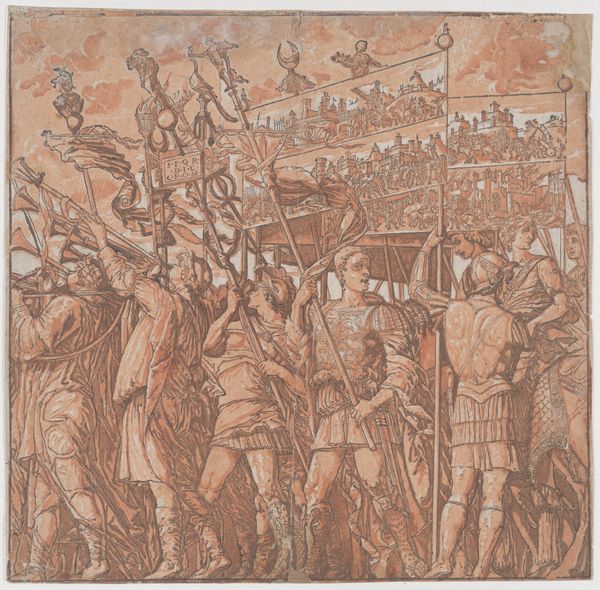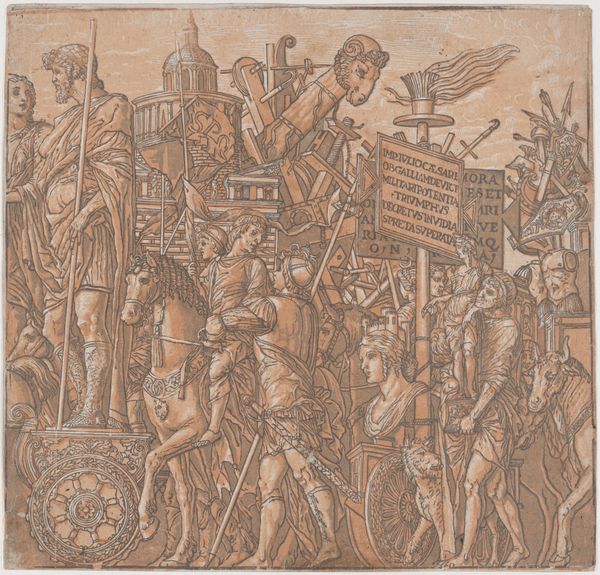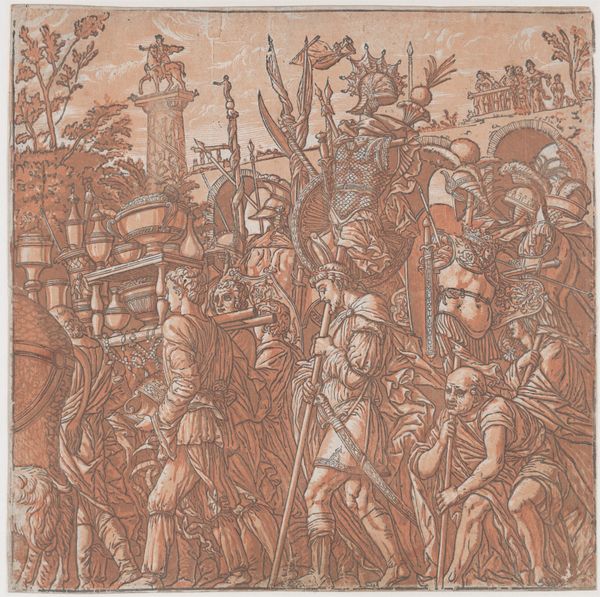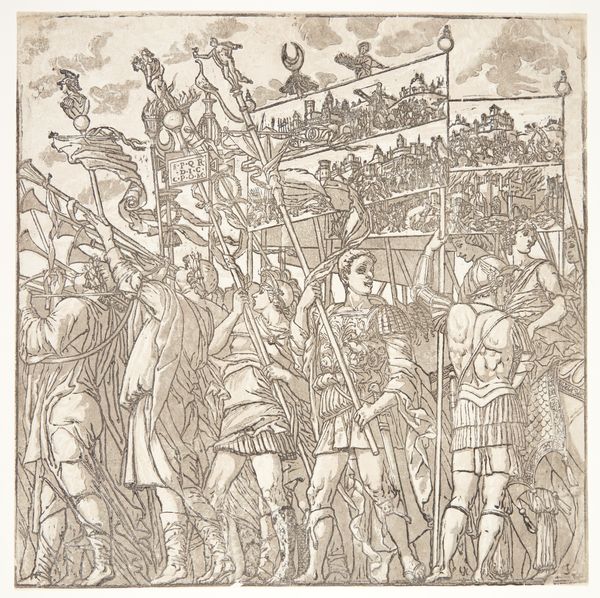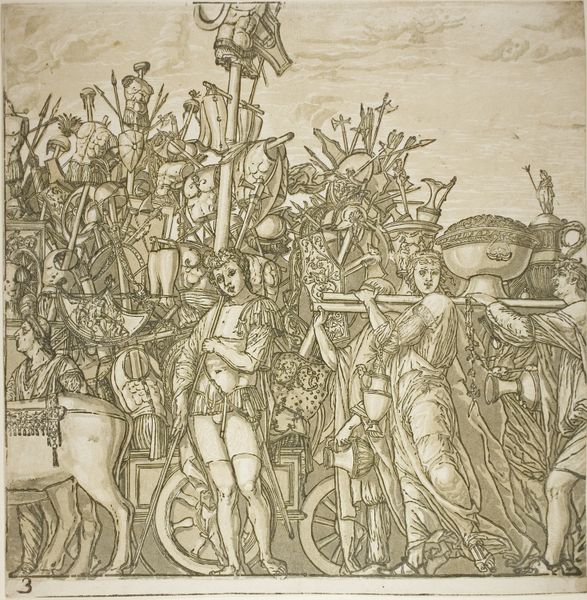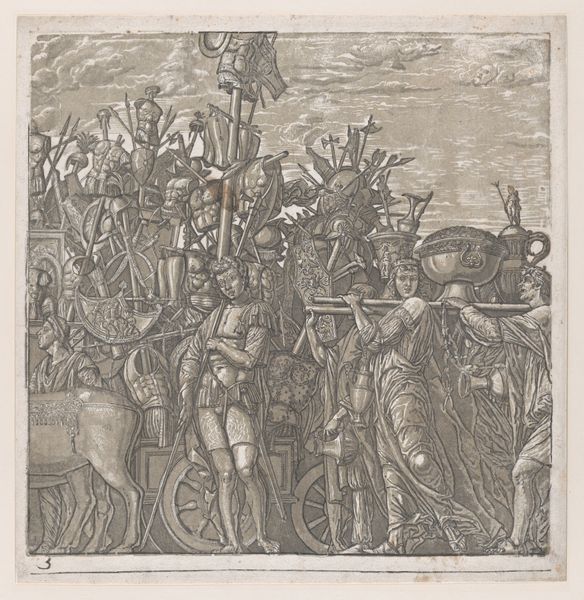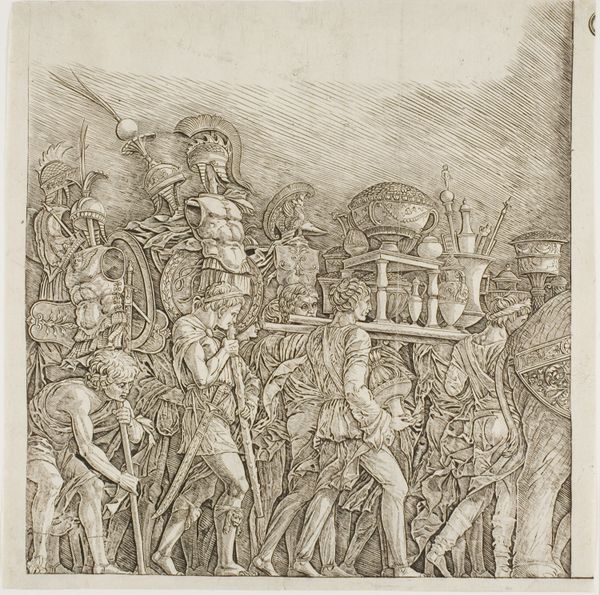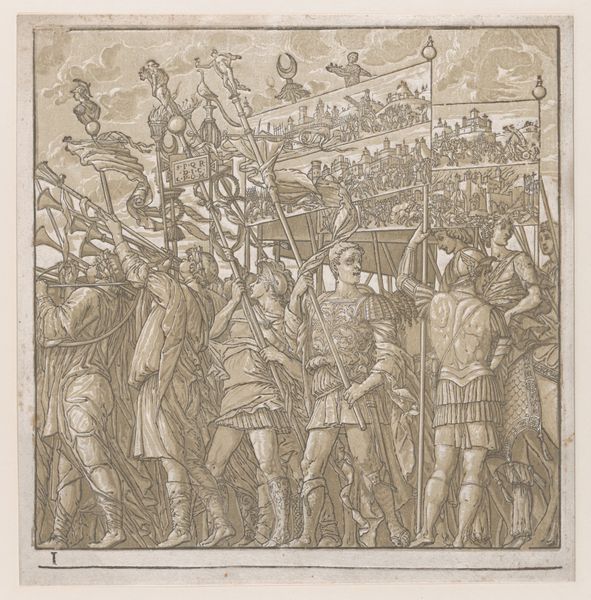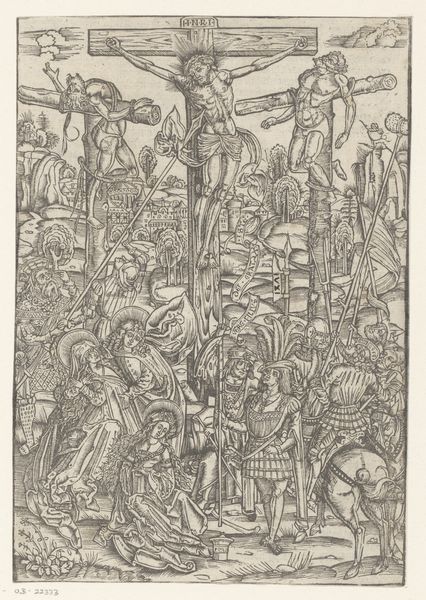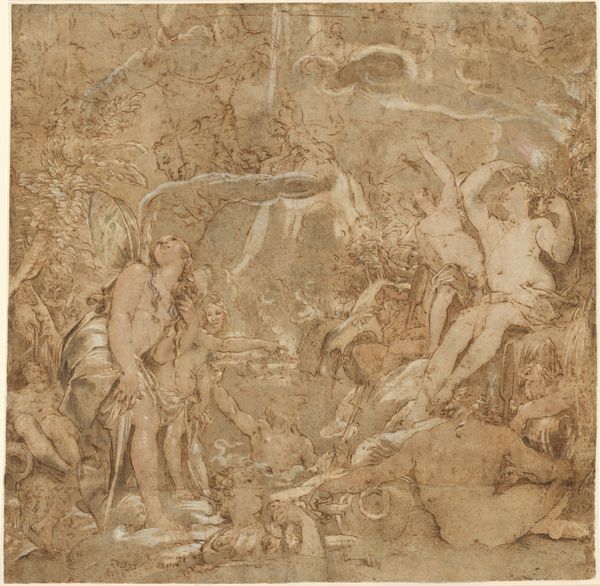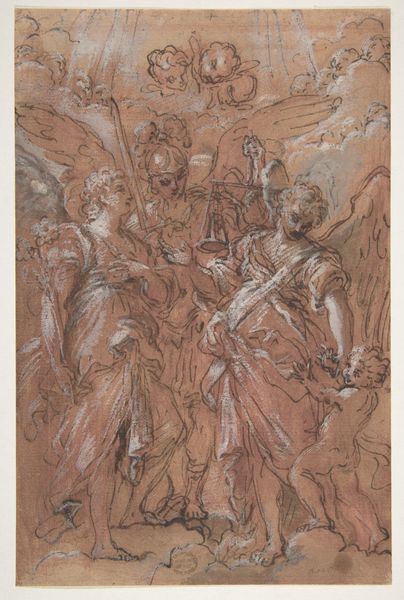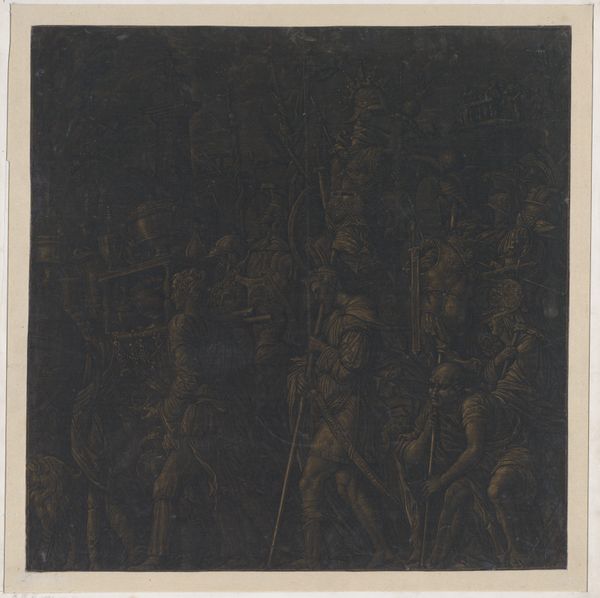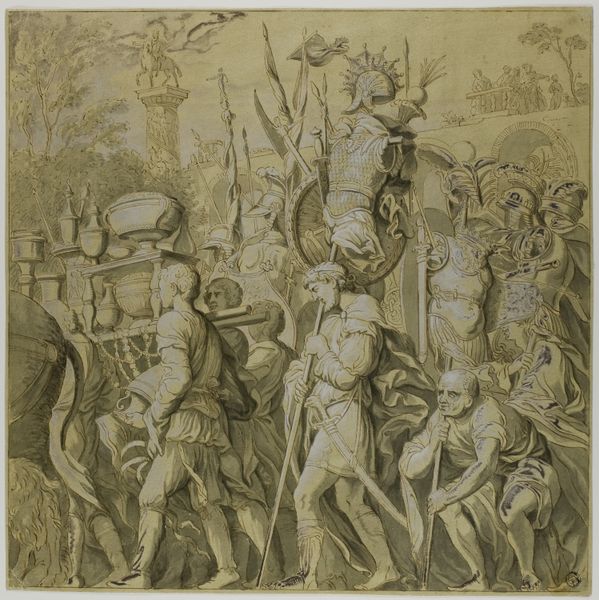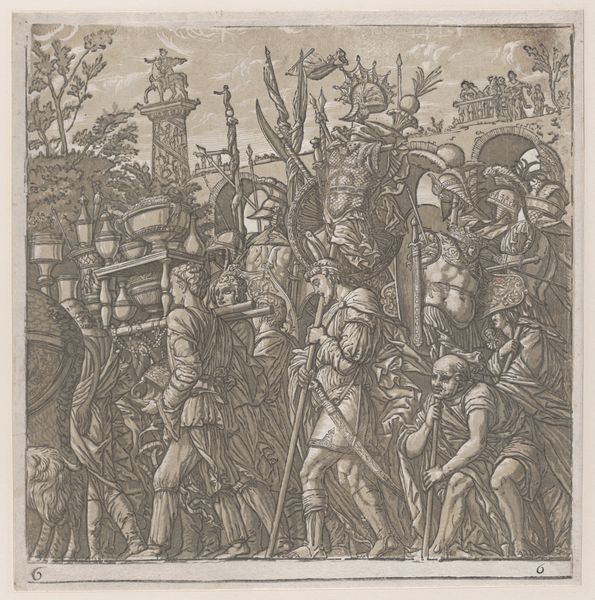
Sheet 3: The trophies of war, from "The Triumph of Julius Caesar" 1599
0:00
0:00
drawing, print, engraving
#
drawing
#
weapon
#
ink painting
# print
#
figuration
#
men
#
line
#
history-painting
#
armor
#
italian-renaissance
#
engraving
#
arm
Dimensions: Sheet: 14 3/4 × 14 13/16 in. (37.5 × 37.7 cm)
Copyright: Public Domain
Curator: This is "Sheet 3: The trophies of war, from "The Triumph of Julius Caesar," crafted by Andrea Andreani around 1599. It's currently housed at the Metropolitan Museum of Art. Editor: Woah, a tidal wave of trophies! It feels chaotic, almost claustrophobic, but undeniably grand in scale even within this modest print. What medium did Andreani use to capture all this detail? Curator: This print employs a chiaroscuro woodcut, which allowed for simulating light and shadow through layered blocks. The medium truly enlivens the triumphant procession! It reminds me of being swept up in a historical drama. It's not just looking at the past; it's feeling the weight of victory, literally. Editor: Interesting. See, I am captivated by the line work; how each stroke delineates form, but also contributes to the overall density. Look at how the trophies pile upon each other—the weaponry, the armor, and the bodies themselves interlock creating this network. What's striking is how Andrea managed to convey volume while keeping it dynamic using this limited palette of color. Curator: Yes! The lack of color almost amplifies the narrative—it’s as though the artist wanted the focus purely on the forms and their arrangement. It really gives you insight to Roman Imperial ambition! This work serves as a visual documentation, transforming martial conquest into a tangible collection. Each object carries with it stories of bravery, sacrifice and perhaps brutal reality. The artist uses history-painting techniques to portray complex figuration here. Editor: Absolutely. The very act of stacking these items atop each other also transforms their symbolic status; these individual symbols coalesce to show the triumph's immensity, but simultaneously hints that they are disposable, as the conquered fade in significance. Curator: Right! These are all instruments of power that carry narratives that are quite personal too when we reflect on how each piece may represent a single person, it puts us face to face with questions about sacrifice. Andreani has allowed something that once held power to exist passively—collected and piled up, as objects of past valor and aggression. I feel a lot looking at this, and that's the goal with great artwork, isn’t it? Editor: Agreed! It seems there is always some kind of story within artwork. It definitely reveals new avenues for thought on this topic for me.
Comments
No comments
Be the first to comment and join the conversation on the ultimate creative platform.
